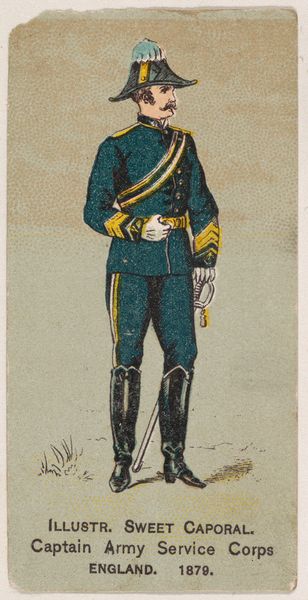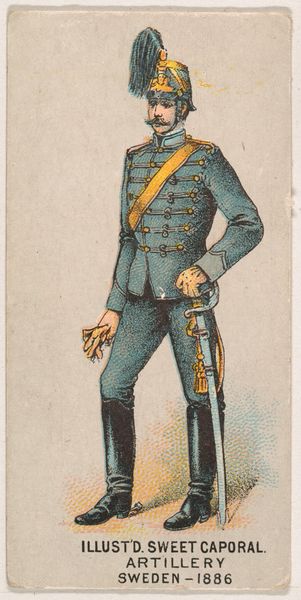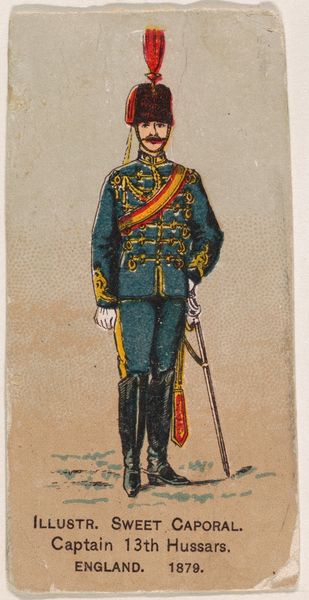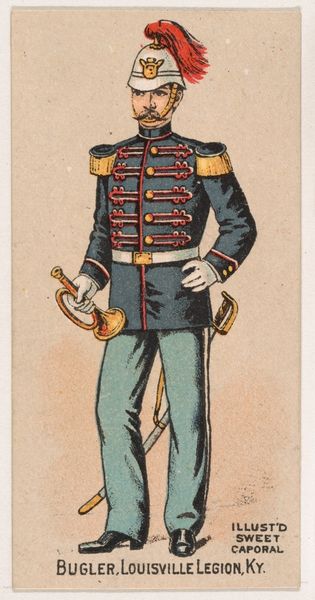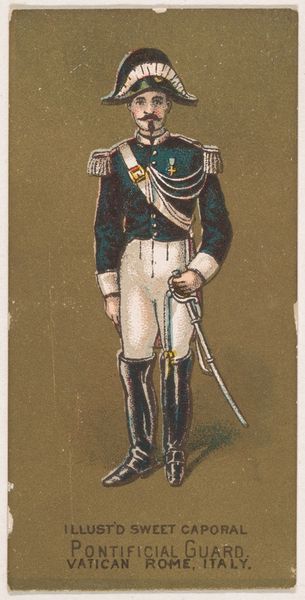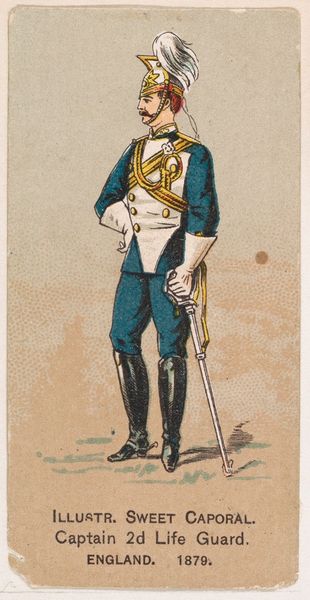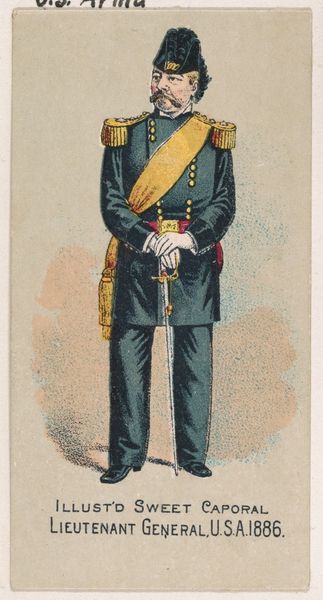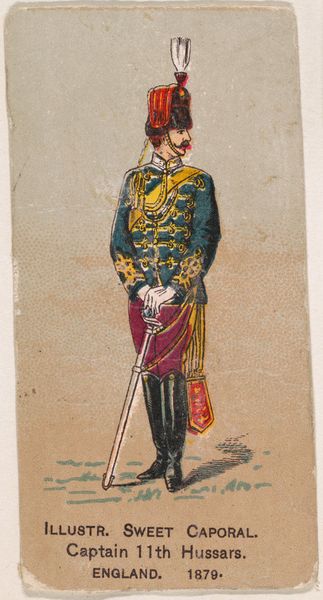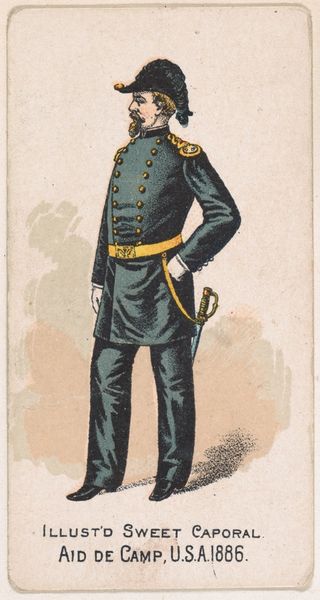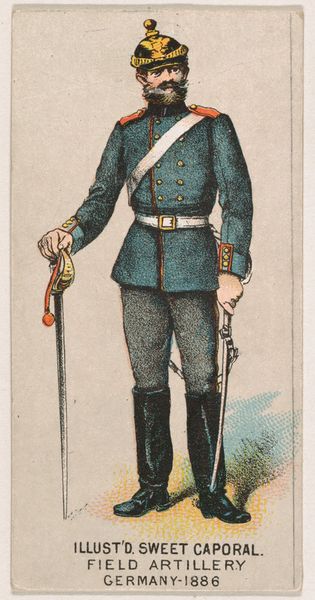
Captain, 19th Hussars, England, 1879, from the Military Series (N224) issued by Kinney Tobacco Company to promote Sweet Caporal Cigarettes 1888
0:00
0:00
drawing, print
#
portrait
#
drawing
# print
#
figuration
#
soldier
#
men
#
genre-painting
#
academic-art
Dimensions: Sheet: 2 3/4 × 1 1/2 in. (7 × 3.8 cm)
Copyright: Public Domain
Editor: Here we have a rather dashing "Captain, 19th Hussars, England, 1879" print. It was made by the Kinney Tobacco Company around 1888 as part of their Military Series. The drawing has an almost uncanny, hyper-realistic quality given that it's printed on a small, thin card. What stands out to you? Curator: Let's not overlook its initial function: advertising. The print isn’t merely decorative, but a commodity circulated to promote Sweet Caporal Cigarettes. I'm interested in the labor that went into the making of the image – the artists involved, the printing processes, and how this labor connects to a larger network of capitalist production. Think of the material conditions behind mass-produced imagery. Editor: So you are suggesting that it might be too easy to separate the artistic merits of the image from the means by which it was created and disseminated? Curator: Exactly. Look at the level of detail lavished on the uniform. Consider the target demographic. Cigarette cards like this aimed to cultivate aspirations in their consumers, creating a subtle link between military prowess and the act of smoking. How did such seemingly innocuous cards contribute to the creation of a heroic image around warfare, linking the ritual of smoking with ideas of bravery? Editor: That's fascinating! It reframes my perspective. I was so focused on the individual depicted, that I had missed this reading about the material and historical factors behind its making. Curator: Thinking materially asks us to consider how even small-scale objects like this played a part in the larger workings of power and cultural production. And it makes one wonder how we create power through the commodities we make and buy. Editor: I’ll never look at a trading card the same way again! Curator: Nor will I. Let's consider the environmental impact next time.
Comments
No comments
Be the first to comment and join the conversation on the ultimate creative platform.

